The Pros and Cons of Beeswax Food Wrap
There are tons of things to LOVE about beeswax food wrap (I mean, have you SEEN the wonders it works on leftover avocado?) but like all things in life, it's not perfect either.
While I love to talk about how great Ideal Wrap is, here's an honest look at the pros and cons of beeswax food wrap.
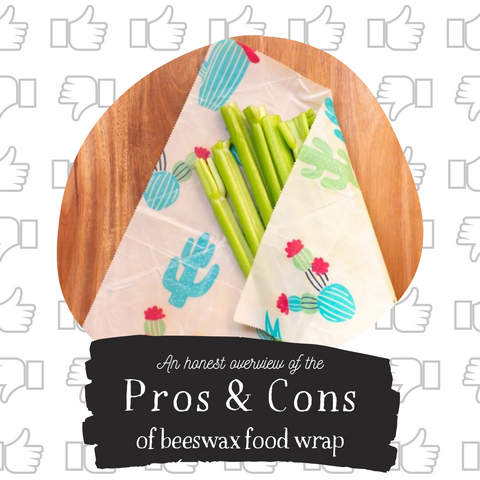
The Pros and Cons of Beeswax Food Wrap
Pro: It's ALL natural
Made from all organic ingredients and materials (typically organic cotton, beeswax, some type of plant oil and tree resin), beeswax food wrap is a very natural way to store and preserve cut-into fruits and vegetables, cheeses and crusty breads. The materials are also 100% compostable, meaning beeswax food wrap is capable of disintegrating into natural elements in a compost environment, leaving no toxicity in the soil.
Con: It melts
As an owner of a beeswax wrap company, this is MY biggest con! While I LOVE demonstrating Ideal Wrap at outdoor markets here in the Sunshine State, and typically do really well sales-wise, the heat is a wrap killer. The wraps can only be displayed in the shade, and must be kept out of direct sunlight during warmer months. And they definitely don't like to be left in a hot car!
When the beeswax wraps melt together in the package, they become stuck to one another and hard to pull apart. Multiple temperature changes, particularly when the wraps are still new and in the packaging, can also cause "beeswax bloom" which is a white film or spots that form on the surface of 100% beeswax. Beeswax bloom is completely harmless, though, and is actually a solid indicator that your beeswax is in fact 100% beeswax, and not mixed with other waxes like soy, paraffin or palm.
The low melting point of beeswax also limits the use of the wraps to cold and room temperature foods and dishes, so it can’t be used in every scenario that plastic can.
Pro: It works wonders on leftover avocado
If you never used your Ideal Wrap for anything other than avocados, it would still be 110% worth the investment.
We all know the struggle of opening an avocado at the exact right moment; you know, when it's ripe but not too ripe. And when your avo is perfect, you can be tempted to eat the whole thing just so you don't waste the rest. No more! Ideal Wrap has finally come to the rescue!
I've kept the other half of an avocado green for more than 50 hours - that's four days! The breathability of the wrap allows otherwise trapped gasses to escape, so your avocado doesn’t suffocate and turn slimy or grey.
Perfect avocado toast two days in a row? It's finally possible.
Con: It usually comes with a premium price
When it comes to high quality beeswax, demand outpaces supply, which makes all-natural beeswax an expensive commodity. This is reflected in the price of beeswax food wraps, no matter which brand you end up purchasing. With that said, it is definitely worth the investment into a name brand, otherwise you may end up with something you can't use at all. Trader Joe's, for example, put out a terrible quality wrap. While their price was a few dollars less than a name brand, the wraps felt stiff and dry. And I certainly hope this didn’t make all beeswax food wraps look bad!
Even if you go the DIY route, the ingredients will cost you, and you'll likely have to buy more than you need. To lower the cost, find a friend with whom you can split the ingredients! But don't skip over any of them; leaving out the jojoba oil or tree resin will produce an undesirable effect.
Pro: It's definitely worth the investment
Reusability is the name of the game, and beeswax food wraps are in it to win it. A name brand beeswax food wrap like Ideal Wrap should last for more than 200 uses, even with regular washing, which might equate to roughly a year of regular use.
If you like, you can think of one wrap as replacing 200 Ziploc baggies - at $20 for 500 baggies (from my quick internet search), and 600+ uses in our Petite Variety pack, it’s pretty comparable price-wise. Furthermore, the negative externalities (the cost to the environment) of the single-use plastic baggies aren’t accounted for in the market price. So from the perspective of an environmental economist, the beeswax food wrap is the less “costly” option.
The adhesive properties should not diminish with washing, making beeswax food wrap truly reusable. Washing is easy, but there are a couple of rules. Here's a full tutorial on how to properly wash your beeswax wrap!
Con: It can leave residue behind on dishes
When your Ideal Wrap is new, you may notice it leaves some residue behind on your hands as you use it. This residue on my hands has never really bothered me, but I understand it can be annoying for some. It wears off pretty quickly, but not always right away after hand washing.
Similarly, small amounts of the beeswax coating can be transferred to dishes when you use your wrap to cover leftovers, etc. When the wrap is new, there's a lot of "extra" coating, which wears off over time (onto your hands and dishes!). If you've wrapped a clear bowl or jar, you've likely seen exactly what I mean.
When the wraps are "worn in" after a dozen uses or more, this will occur less and less. I also haven’t found this is an issue when wrapping foods directly, since less pressure is applied, and the wrap is adhered more to itself than to the food.
To remove any residue left behind on dishes, a hot dishwasher will usually do the trick. If after washing in hot water you still have a lot of residue, a citrus-based adhesive remover will take care of the rest. Personally, I don’t bother removing all residue after each use, as it eventually wears off on its own.
Pro: It’s incredibly versatile
When I picked up a pack of beeswax wraps for the very first time, I thought, this will be great for veggies. Then I started using them, and the more I used them, the more uses I found for them! From covering your Toddy while it brews to covering your slaw while you finish cooking dinner, there are dozens of uses for beeswax wraps. Earlier this year, we compiled a list of 78 ideas for using your beeswax food wraps, so if you’re looking for a little inspiration, this article is a great starting point!
Con: It can mold
Yep, there's not much info about this one on the web, but from personal experience I know that beeswax food wrap can mold. When your wrap is new, this is less of a possibility, as the shiny new coating seals out moisture and prevents it from penetrating the fabric. But over time, as the coating wears down (even if only in tiny places) water can make its way into the fabric. This is why it's important to keep your wrap clean and dry. Stuck-on food particles can also contribute to mold, so make sure to clean your wrap thoroughly using our tips from this post!
Pro: You can refresh them when they start to look shabby
While your wrap won’t last forever, keeping it clean and dry is a good place to start. Even with proper care, the coating may crack or become worn unevenly; but this isn’t all bad - it just means you’re putting your wraps to good use! There is a very quick and easy solution to reinvigorate your wraps by slightly warming the coating and allowing it to fill in the cracks and gaps. We even have a great tutorial right here for doing just that! After giving your wraps a quick refresh, they often look good as new.
Con: You probably can’t pick them up at your grocery store (at least not yet)
Beeswax wraps aren’t yet mainstream, but trust me, we are working on it! Some specialty food stores (like Bulk Nation Foods), coffee shops, and kitchen mercantiles are starting to carry beeswax food wraps, which is AWESOME! You can also find them online (at idealwrap.com/collections of course)!
Pro: It’s the perfect alternative to plastic wrap for cheese
Did you know that air tight containers are the worst for cheese? The ammonia emitted by cheese can quickly be reabsorbed by the cheese if it’s not allowed to escape. If you don’t keep cheese paper on hand, Ideal Wrap is a fabulous reusable alternative! Read more about storing cheese plastic-free in this post!
Con: It can stain
Ideal Wrap certainly absorbs oil, creating oil stains, and also will take on colors from a variety of foods and spices including bell pepper, tomato sauce, papaya, and paprika. To prevent oil stains, blot away excess oils before storing foods like pizza. You can also layer a paper towel in with your food to prevent unwanted color transfers. While oil stains don’t look the prettiest on your wrap, they are harmless as long as they are small, and shouldn’t affect the usability of your wrap. Stains from colorful foods are also harmless, but can’t be removed - so I suggest you don’t try to remove them, as excess washing is far more damaging. Just think of those papaya stains as added character :)
Pro: It helps you eat more vegetables
Seriously - now that I use Ideal Wrap, I am definitely able to keep more produce on hand than before. There’s only two of us in my household, and one of us (ahem, me) is more into veggies and salad than the other. ;) It can be hard to keep veggies on hand when the other 3/4 of your cucumber always goes bad before you can eat it, or those broccoli florets you washed and chopped are already turning brown before your next salad. The ability to keep vegetables fresh in the fridge is a must for any nutritious-eater on a budget!
Con: It can absorb smells
I do love Ideal Wrap for onions - it keeps the stink out of my fridge and keeps my onions crisp. But if you have a particularly fragrant onion, the wrap will indeed absorb some of the smell, especially if stored for longer than one day. The good news is, that with a quick wash and 1-2 days to air out, the smell does dissipate. There are a couple of tricks you can use to reduce the odor transfer, though. For one, you can wrap the onion half so the wrap isn’t touching the cut side of the onion using a pouch or dumpling-style fold. If the wrap isn’t contacting the cut surface of the onion, it will absorb less of the onion smell. Alternatively, you can reserve one of your older wraps for onions and other fragrant foods. I am personally quite sensitive to the aroma of onions and garlic, I find that even a whiff of onion before eating something else is an assault on my taste buds! Even if said food doesn’t actually have any of the onion taste! I do have a wrap that I only use for onions, just for that reason.
Pro: It makes you smile
I’m going to end on a high note! Ideal Wrap and some other brands have some pretty cool designs and lots of bright and fun colors. You can pick out something that reflects your personality, lifts your mood, matches your kitchen decor, or just makes you smile. And truthfully, that’s what this is all about. If Ideal Wrap makes you feel good when you use it, then I have done my job and Ideal Wrap is a success!
I hope that this article shed some light on the perks, as well as frustrations, of using beeswax wrap for food storage! Since I use this product every single day, I am quite familiar with both the good and the not-so-good, but I definitely say the upsides far outweigh the downsides.
Let me know if you enjoyed this article! I would also love to hear from you regarding your list of pros and cons of beeswax wrap, so leave a comment or send over an email to idealwrap1@gmail.com if you have anything you’d like to add!

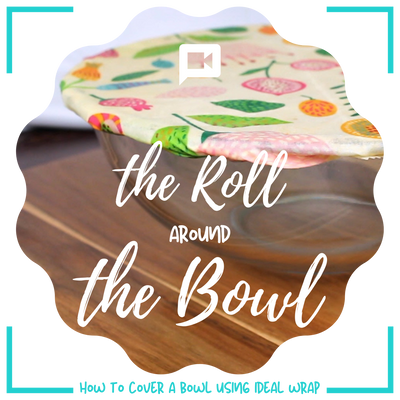
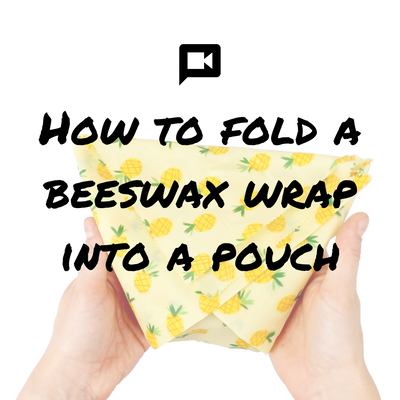
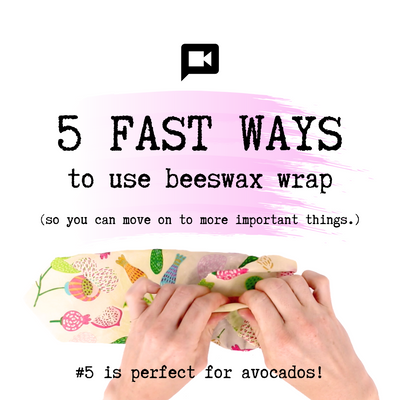
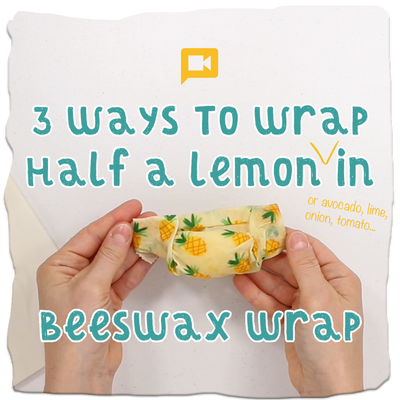
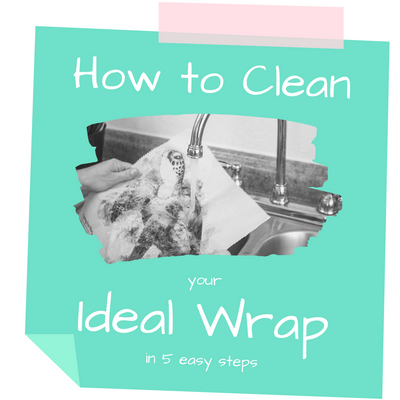
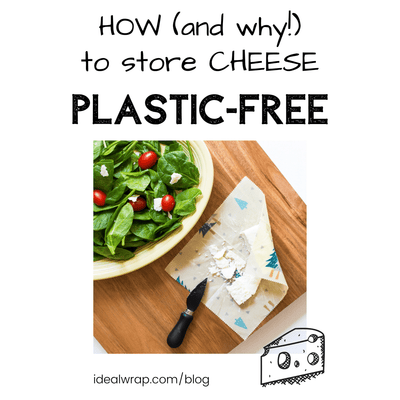
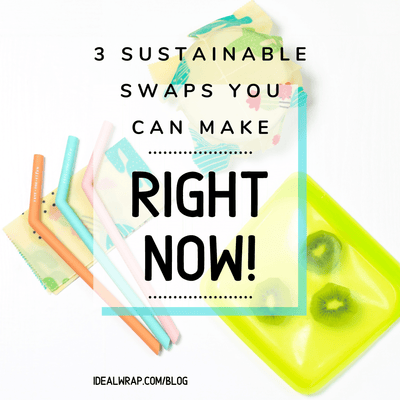

Great article. Tons of good points. I wonder if these would be good for camping/ hiking? You know, like if you lose it no big deal it will just compost! hmmmmmm.
Thank you for this comprehensive article! I appreciate that you did not sugar coat the cons. I think that having complete info only enforces the usability of these wraps helping to keep from making mistakes in using them incorrectly.
Thank you…yours is the first and pretty much the only site that addressed the staining and smell transfer issue with the wax wraps.
People are quick to jump on the band wagon of something new; but are not always given (or listen to) all of the pertinent information about the products flaws, and how to alleviate or how to deal with them.